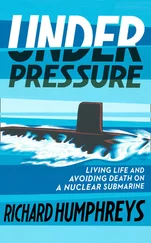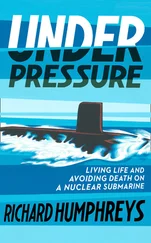When we are in the zone, we will already be in an ACT state of mind. But for the majority of our lives we need a simple set of steps to follow under pressure. The great thing is that by not concentrating on getting into the zone and just following the process, we are more likely to end up in the zone anyway.
The ACT sequence is intended for repeated use because most performances involve a series of separate challenges. Awareprovides our personal overview of the situation. Cleargives us a strategy to put into action. And taskgets us going.
Instead of reacting to pressure defensively with APE behaviours, we can use the ACT sequence to face the pressure, and find a way to adapt and move forward.
It wouldn’t make sense to bury ourselves in the taskwithout constantly reviewing our context and strategy. Every time we check on the context, we can adjust our strategy. Every time we adapt our strategy, we can adjust our actions. And every time we act, the context changes slightly, so we can circle back to the top. A key mental building block for performance under pressure is flexibility.
Choose a recent moment when you had to step up under pressure, and did. Can you recognise a moment when you put a stop to your APE behaviour, and got a grip on your reaction to the context (aware), formed a strategy (clear) and went to work with conviction (task)? If so, you’ve already intuitively discovered the ACT structure and applied it successfully.
ESC-APE vs IMP-ACT
ESC-APE
Some moments are just too big for us.
Sometimes, under pressure, we hit our threshold, and it’s then that our damaging APE behaviours emerge.
Most pressure arises from our fear of possible judgment. And the key elements of judgment are expectations, scrutinyand consequences( ESC).
Before we perform, people are expectingus to reach a certain standard. During our performance, we are scrutinised, often publicly. And afterwards , the quality and outcome of our performance will have consequences.
Sometimes we will be affected by one element more than the others, but generally they work together as a tight, inescapable sequence. As the level of expectations, scrutiny and consequences rises, so does the pressure. And it works in the opposite direction: if expectations, scrutiny or consequences are reduced or taken away, pressure evaporates.
More expectations and scrutiny always mean bigger and wider-ranging consequences. These consequences extend beyond success and failure to include material outcomes such as salary increases and promotion. And these material outcomes are rocketed upwards by media reactions and – perhaps the ultimate judgment – the impact on our reputation. The higher the level we are operating at, the more we have to lose through consequences.
Not all moments are equal. Every elite performer has had moments that carried greater significance, when they failed to cope.
Most people, when they go to work or undertake an activity, are not looking for ESC. In fact, most people try to avoid judgment as much as possible. The less ESC there is, the more comfortable they are. This returns us to the idea that operating when we are uncomfortable is at the heart of performance under pressure.
The external origins of pressure – ESC– plus the most unhelpful behaviours under pressure – APE– create the ESC-APEmodel. There are some moments that carry too much pressure for us to bear because of the level of ESC, and this level of discomfort causes us to go APE. Rather than thinking clearly, we act impulsively out of emotional tension. We avoid the discomfort through aggressiveor passivebehaviours, or by escapingfrom the situation altogether.
Try applying the ESC-APE model to your personal performance history. If you’re honest, looking back, which behaviours are you least proud of? Which behaviours have damaged your reputation the most? Can you recognise how expectations, scrutiny and consequences created pressure that affected your behaviour? Perhaps you stepped out onto a bigger ‘performance stage’ than normal, with a larger audience watching to see whether you could cope. But instead of performing at your best, you got loud, boisterous, and belligerent; or you cried off and said you were unwell when you really could have turned up; or you performed, but you were quiet and restrained and just never got going.
Newton’s first law states that an object will remain in its current state of motion unless an external force acts on it to change its momentum. We humans are the same: we only move because of pressure. It’s all about inertia, a resistance to change.
Most people need external pressure to move them. But there’s a smaller group driven by pressure from within – and they’re the ones who inevitably go further.
If externally driven people respond to pressure, it’s because they’re moved by expectations, scrutiny and consequences (ESC) from their employers and others. But what if we’re internally driven?
Instead of someone else’s expectations, we’re driven by our own intention. Instead of being affected by someone else’s scrutiny, we have a clear sense of where we are right now, in this moment. And instead of someone else’s consequences, we are focused on our current priority. The mental recipe for internally driven people is intention, moment, priority, or IMP.
Start with the context: think of a current situation that’s challenging you. First, in that situation, what is your intention? Look into the future and decide what outcome you want and the way you want to operate. How it will look and feel to close observers? Second, what is the reality in this moment? What is currently working well and what isn’t? There’s probably a gap between your intent and your current reality. Third, what is your priorityfor closing this gap and making progress towards the desired outcome? Be specific: what will your first step be?
If we are internally driven, we are far less affected by external pressure, because the drive from within is stronger. We are not immune to it, but it is less disturbing.
Performers who are externally driven also tend to identify external factors that are limiting their ability. This is more comfortable because it makes it not their fault. Internally driven performers tend to look at internal obstacles and see their primary opponent as themselves.
Being internally driven also feels different. Instead of feeling the weight of expectation coming down on us from the outside, we feel power flowing up from within. External pressure breaks us down, makes us shrink, and burdens us; internal drive builds us up, makes us grow, and energises us.
IMP sets us up to be far more resilient mentally in the face of external pressure. When we need external ESC pressure to move, we are vulnerable to RED aggressive, passive, escape (APE) reactions. The two go hand in hand, forming the unhelpful ESC-APE pathway that leads us to disengage under pressure. In contrast, the internal IMP factors tend to drive the BLUE aware, clear, task (ACT) responses, forming the constructive IMP-ACT structure, which keeps us engaged under pressure.
Instead of feeling or deciding that the moment is too big for us, which causes us to ESC-APE, we stand our ground and have IMP-ACT. Moderate performers are pushed along by others and tend to escape when the pressure comes on, while elite performers are pulled forward by their own ambitions.
Читать дальше












